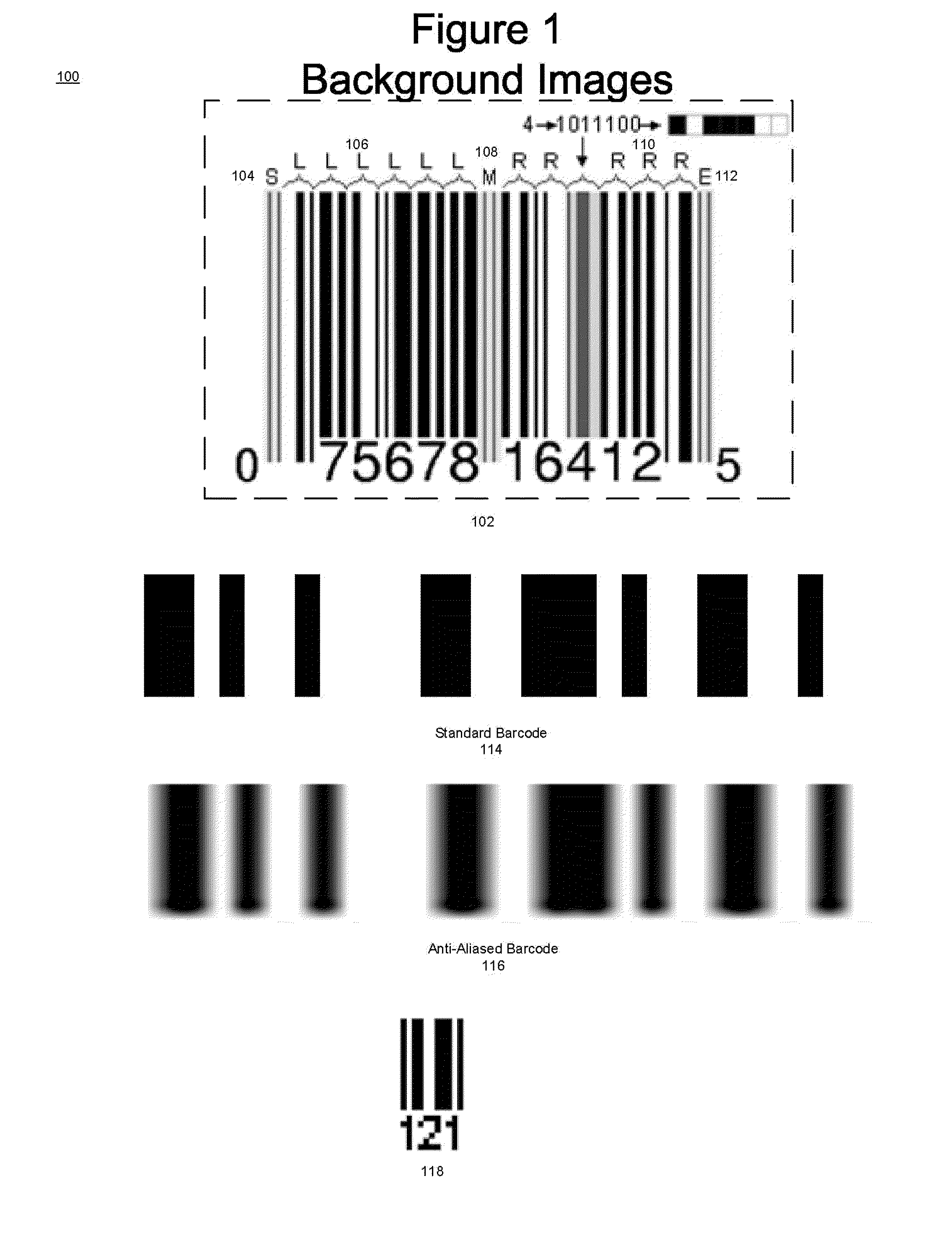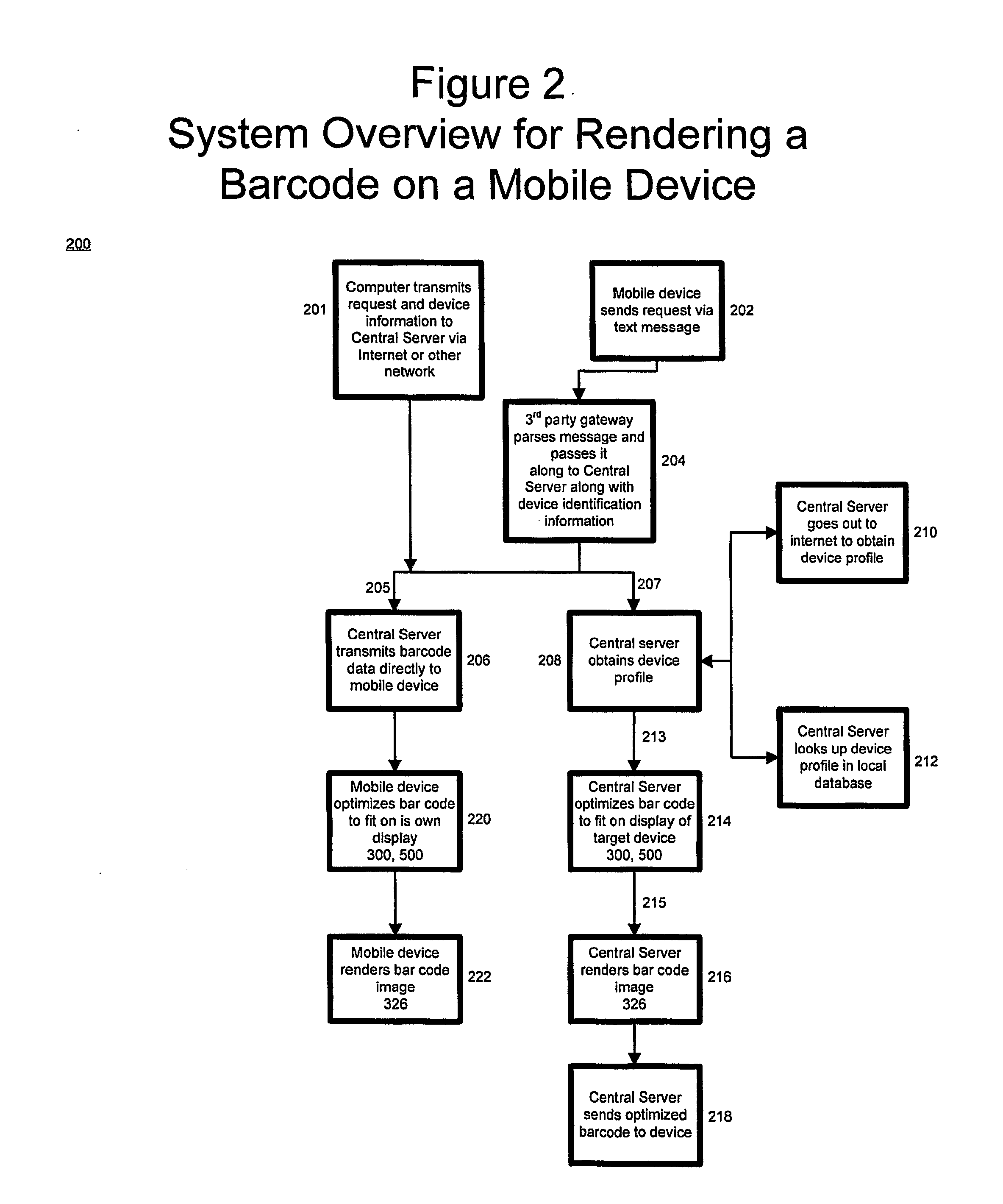Customizing Barcode Images for Particular Displays
a barcode image and display technology, applied in the field of customizing barcode images for particular displays, can solve the problems of not being able to render images, unable to successfully read barcodes, and displaying barcodes on electronic displays
- Summary
- Abstract
- Description
- Claims
- Application Information
AI Technical Summary
Benefits of technology
Problems solved by technology
Method used
Image
Examples
Embodiment Construction
[0035]Overview of the Invention
[0036]The solution to the problem of sizing a barcode that is displayed in a pixel display in order to ensure maximum readability of the barcode by a barcode reader has three parts.
[0037]The first part is to orient / rotate the barcode in the display so that it can be sized for maximum readability. Three different possibilities are shown in FIG. 4:
[0038]1) display the code horizontally as shown in 402
[0039]2) display the code vertically as shown in 404
[0040]3) Rotate / orient the barcode so that it is displayed diagonally on the display as shown in 406, 408, 410, and 412. What is meant by diagonal in the present context is any orientation of the barcode in which the barcode is not parallel to the sides of the display.
[0041]The second part of the solution is to expand the barcode so that it is readable by the barcode reader.
[0042]The third part of the solution involves enabling further expansion of the displayed barcode by one or more of the following metho...
PUM
 Login to View More
Login to View More Abstract
Description
Claims
Application Information
 Login to View More
Login to View More - R&D
- Intellectual Property
- Life Sciences
- Materials
- Tech Scout
- Unparalleled Data Quality
- Higher Quality Content
- 60% Fewer Hallucinations
Browse by: Latest US Patents, China's latest patents, Technical Efficacy Thesaurus, Application Domain, Technology Topic, Popular Technical Reports.
© 2025 PatSnap. All rights reserved.Legal|Privacy policy|Modern Slavery Act Transparency Statement|Sitemap|About US| Contact US: help@patsnap.com



